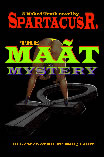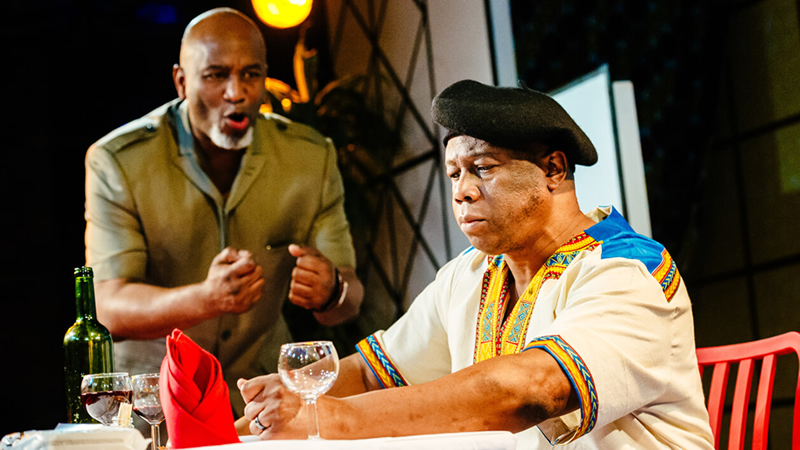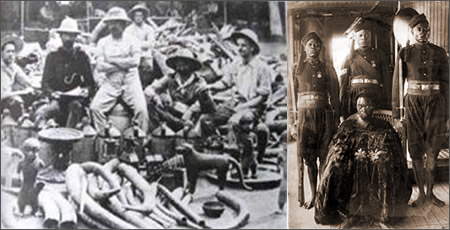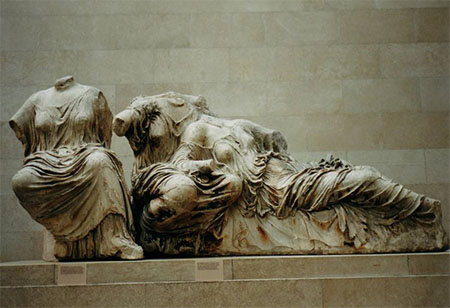“The Maãt Mystery is a journey of discovery through the human mindscape, plumbing the depths of individual and collective depravity, degradation and self-destruction and scaling the heights of supreme enlightenment.
This is a pilgrimage through time and space, spanning three continents. Our quest begins in Europe, with Carol and Hans. In North America we meet the mysterious Aiysha, Fundisi the Teacher and Shango. In Africa, we experience the marvellous, ancient wisdom of Nenen Haiti and learn to see the modern world with different eyes.
This word vision is also a sexpense thriller with real people such as George, the unfortunate victim and Gertrude, the “rude gal”, dealing with life’s ordinary issues in extraordinary ways. Laugh and cry, live and die with these key characters as they interact with each other, continuing their personal quests for fulfilment, seeking, among other things: acceptance, identity, knowledge, love, material acquisitions, power, more power, sexual satisfaction and vengeance.
Please note that it is not suitable for children.
It can also have a dramatic effect on how you, the adult, sees the world and your place in it. Some people may be shocked, offended or even reoriented by some of the language, events, ideas and concepts expressed.”
An extract from the introduction by the author

When this book was first published in 1998 it was followed by much controversy.
Despite the well placed warning that “this book is not suitable for children” its portrayal of adult themes attracted many detractors. Some were shocked by the blunt descriptions of intimate relationships that begin almost immediately upon opening the book. But in many ways this criticism was unfair.
Much of the opposition to the title focused primarily on the tacky front cover and its graphic depictions of sex. Indeed it was these superficial elements around the Maãt Mystery that dominated much of the furore, not the books contents.
Whilst accusations of it depicting copious amounts of gratuitous sex may be true, this does not negate the sizable worth of the story woven by the author. Whilst some would argue that it is not possible to write elegantly whilst using coarse language this is patently untrue.
Yet, in many ways, despite the title this book is not written for those who are already interested in reading conscious literature. Indeed if you are already familiar with the word Maãt then much of what is contained within the story may already seem familiar.
Nonetheless this does not mean that The Maãt Mystery is focused myopically on the cult of Egyptology or is of no use to a conscious reader. Whilst the author Spartacus R is known as a veteran of African liberation community work, his talents are numerous and include that of broadcaster, poet and musician. Perhaps it is this repertoire of skills which has enabled him to craft a tale that whilst seeking to engage readers on a base level simultaneously reaches some of the higher level reasoning expected of contemporary Africentric literature.
Written drawing heavily from the film noir genre, the depiction of the main characters often feels like exaggerated caricatures of a handful of real people known intimately to the author. The tale starts with an explosive opening where we are introduced to Aiysha Shabazz, the heroine of the story. Moving from this point to her attempted indoctrination into an Islamic ‘black’ group we are taken along an often surreal journey where espionage meets African consciousness in a fusion that manages to entertain and educate at the same time.
Yet whilst the development and path of Aiysha’s consciousness awakening is one of the central plots of The Maat Mystery, the true hero of the story is Shango Moor. In classic film noir tradition he plays the role of the assertive, street smart and inquisitive detective with a heart. His main nemesis is the european female, Gertrude Ludmeyer, an immoral cold femme fatal who ruthlessly uses both her body and intelligence to achieve her aims. It is through the eyes of these two characters where the author seems most comfortable and it is their respective actions building up to their climatic meeting that sets much of the pace of the story.
Indeed, whilst much is sacred in this book, nothing is taboo and the topic of inter-racial sexual relationships is a strong theme throughout. Like the rest of themes addressed it is tackled in a blunt and direct manner, although in this instance it feels there is a confusingly and almost apologetic tone. The character George for example is the classic example of the stool pigeon, the African male who plays the straw man to corporate players in a game of global dominance to which he is both an observer and unwilling participant. Manipulated by both the system and agents of the exclusive chasing ‘Mouth’ newspaper his role in the story is representative of the unconscious zombie, blindly following orders until he loses his head.
It is through these sub stories that the author introduces several brilliant critiques explaining the current predicament facing Africa and her children. No opportunity is lost although at times this means the text borders on becoming preachy. Thankfully the same directness used when depicting sex is used in some superb renditions of ‘TruthSaying’. No one is spared, from the expose of corrupt police officers as pigs to the role of ‘king makers’ like the Machiavellian strategist Paul Peters. Spartacus is brave in that as an author he does not allow sentimentality to distort Truth challenging African organisations that remain disorganised and the African individuals whose disloyalty - deliberate and otherwise leads to them betraying their village, families and self with devastating consequences. It is in this area that Spartacus excels, he writes what he knows, without hesitation or pause.
Yet if there is one area of this book that is difficult to read then it is the author’s depiction of sexual abuse. Various situations reflecting this theme occurs throughout the book and whilst adding to our understanding of the characters involved, it also seems to provide a perverse voyeuristic lens into topics that could have been handled with more sensitivity. Whilst the graphic descriptions of love making and even manipulative sex could easily be argued necessary within the context of the adult style of the book, there are a few scenes of abusive behaviour that did not need to be painted in such detail. It is here in these few scenes where the book borders on becoming ugly.
This may have been the intent of the author, but for the unsuspecting reader it could be disturbing. Fortunately this alone cannot mar the passion behind the central story driving The Maãt Mystery. As we become exposed to the trials and challenges faced by our heroes whilst investigating the meaning of a mysterious object that has come into their possession, we simultaneously become curious to see how Aiysha navigates the plethora of agents and exploitative institutions of death. Indeed this is where the book excels.
How would any of us respond once made aware of our responsibility and capability to serve our community against the warmongering of those that would seek to destroy us? During The Maãt Mystery our main characters return to Africa and it is here where we are exposed to the underlying philosophical and spiritual beliefs of the author. Impressively we are not directed to Kmet (Ancient Egypt) but to a village named Ahumka in Ghana where we are introduced to the wise elder and medicine woman Mama Ne’ti.
The decision to make her name a direct reference to Haiti and craft a message inclusive of Africans in the Diaspora is clearly no accident. From the bravery of the Modin Kane guardians to the service provided by the flies, the concluding romance the characters share with Africa becomes both practical and essential to our understanding of the chaos of what went before.
The book has its weaknesses, topics such as rape, incest, child abuse are tackled too glibly and with crass sensationalism thereby missing the opportunity to help us better understand the motivation of some of the books main protaganists. Also, whilst Aiyesha is established as the stories hero her dependency on Shango often makes her appear a sentient adornment to his ambitions, his whims. Yes she is strong, assertive and ultimately far stronger than Shango, yet within the relationship they rarely seem as one other than when sharing physical intimacy. Indeed this is best revealed following her suggestion of them entertaining a polygamous relationship being based not on their needs, but his. However the love between them is unconditional and in this the beauty of African love shines. Individually both are flawed, but united they have strength and an increasing clarity of purpose.
Gertrude, like all femme fatales is a fascinating character, ruthlessly manipulative, totally assured of her pleasure providing abilities, aggressive and in this book is the seductive epitome of european values. In many ways she provides the backdrop for ‘the question’ on mixed relationships; “If we agree that there is a war going on between African and Europeans, isn’t it betrayal to be sleeping with the enemy?” The answer provided by The Maãt Mystery is not what many would expect.
As to be expected, it is during similar types of exchanges between the main characters we obtain insight into the broader issues that arise in the book. Yet, in some areas the dialogue unhelpfully seems to emanate from a single voice expressing a shared point of view across the characters. Not a literary crime, but not always subtle in execution. It suggests that The Maãt Mystery was also intended as a delivery vehicle for the authors message at the end called “The legacy of Maãt” which is described as a transcript of the hieroglyphic message written on the Ankh.
In conclusion, The Maãt Mystery is a brash book with a fine heart. A journey through a world of corruption that in places makes us dirty voyeurs almost complicit in the process but never loses sight of the ultimate destination, the purifying bliss of Mama Africa. In writing this book the author has presented a gift to global Africa for those who are unaware of the war around us. As it is said within; ‘The only limitations we have are the ones we impose on ourselves’.
It is a message worth sharing.

External Links
Global Africa WebsiteSpartacus R - Zara Music RecordsGlobal Africa - Readers Comments
This is a pilgrimage through time and space, spanning three continents. Our quest begins in Europe, with Carol and Hans. In North America we meet the mysterious Aiysha, Fundisi the Teacher and Shango. In Africa, we experience the marvellous, ancient wisdom of Nenen Haiti and learn to see the modern world with different eyes.
This word vision is also a sexpense thriller with real people such as George, the unfortunate victim and Gertrude, the “rude gal”, dealing with life’s ordinary issues in extraordinary ways. Laugh and cry, live and die with these key characters as they interact with each other, continuing their personal quests for fulfilment, seeking, among other things: acceptance, identity, knowledge, love, material acquisitions, power, more power, sexual satisfaction and vengeance.
Please note that it is not suitable for children.
It can also have a dramatic effect on how you, the adult, sees the world and your place in it. Some people may be shocked, offended or even reoriented by some of the language, events, ideas and concepts expressed.”
An extract from the introduction by the author

The Maãt Mystery by Spartacus R
Despite the well placed warning that “this book is not suitable for children” its portrayal of adult themes attracted many detractors. Some were shocked by the blunt descriptions of intimate relationships that begin almost immediately upon opening the book. But in many ways this criticism was unfair.
Much of the opposition to the title focused primarily on the tacky front cover and its graphic depictions of sex. Indeed it was these superficial elements around the Maãt Mystery that dominated much of the furore, not the books contents.
Whilst accusations of it depicting copious amounts of gratuitous sex may be true, this does not negate the sizable worth of the story woven by the author. Whilst some would argue that it is not possible to write elegantly whilst using coarse language this is patently untrue.
Yet, in many ways, despite the title this book is not written for those who are already interested in reading conscious literature. Indeed if you are already familiar with the word Maãt then much of what is contained within the story may already seem familiar.
Nonetheless this does not mean that The Maãt Mystery is focused myopically on the cult of Egyptology or is of no use to a conscious reader. Whilst the author Spartacus R is known as a veteran of African liberation community work, his talents are numerous and include that of broadcaster, poet and musician. Perhaps it is this repertoire of skills which has enabled him to craft a tale that whilst seeking to engage readers on a base level simultaneously reaches some of the higher level reasoning expected of contemporary Africentric literature.
Written drawing heavily from the film noir genre, the depiction of the main characters often feels like exaggerated caricatures of a handful of real people known intimately to the author. The tale starts with an explosive opening where we are introduced to Aiysha Shabazz, the heroine of the story. Moving from this point to her attempted indoctrination into an Islamic ‘black’ group we are taken along an often surreal journey where espionage meets African consciousness in a fusion that manages to entertain and educate at the same time.
Yet whilst the development and path of Aiysha’s consciousness awakening is one of the central plots of The Maat Mystery, the true hero of the story is Shango Moor. In classic film noir tradition he plays the role of the assertive, street smart and inquisitive detective with a heart. His main nemesis is the european female, Gertrude Ludmeyer, an immoral cold femme fatal who ruthlessly uses both her body and intelligence to achieve her aims. It is through the eyes of these two characters where the author seems most comfortable and it is their respective actions building up to their climatic meeting that sets much of the pace of the story.
Indeed, whilst much is sacred in this book, nothing is taboo and the topic of inter-racial sexual relationships is a strong theme throughout. Like the rest of themes addressed it is tackled in a blunt and direct manner, although in this instance it feels there is a confusingly and almost apologetic tone. The character George for example is the classic example of the stool pigeon, the African male who plays the straw man to corporate players in a game of global dominance to which he is both an observer and unwilling participant. Manipulated by both the system and agents of the exclusive chasing ‘Mouth’ newspaper his role in the story is representative of the unconscious zombie, blindly following orders until he loses his head.
It is through these sub stories that the author introduces several brilliant critiques explaining the current predicament facing Africa and her children. No opportunity is lost although at times this means the text borders on becoming preachy. Thankfully the same directness used when depicting sex is used in some superb renditions of ‘TruthSaying’. No one is spared, from the expose of corrupt police officers as pigs to the role of ‘king makers’ like the Machiavellian strategist Paul Peters. Spartacus is brave in that as an author he does not allow sentimentality to distort Truth challenging African organisations that remain disorganised and the African individuals whose disloyalty - deliberate and otherwise leads to them betraying their village, families and self with devastating consequences. It is in this area that Spartacus excels, he writes what he knows, without hesitation or pause.
Yet if there is one area of this book that is difficult to read then it is the author’s depiction of sexual abuse. Various situations reflecting this theme occurs throughout the book and whilst adding to our understanding of the characters involved, it also seems to provide a perverse voyeuristic lens into topics that could have been handled with more sensitivity. Whilst the graphic descriptions of love making and even manipulative sex could easily be argued necessary within the context of the adult style of the book, there are a few scenes of abusive behaviour that did not need to be painted in such detail. It is here in these few scenes where the book borders on becoming ugly.
This may have been the intent of the author, but for the unsuspecting reader it could be disturbing. Fortunately this alone cannot mar the passion behind the central story driving The Maãt Mystery. As we become exposed to the trials and challenges faced by our heroes whilst investigating the meaning of a mysterious object that has come into their possession, we simultaneously become curious to see how Aiysha navigates the plethora of agents and exploitative institutions of death. Indeed this is where the book excels.
How would any of us respond once made aware of our responsibility and capability to serve our community against the warmongering of those that would seek to destroy us? During The Maãt Mystery our main characters return to Africa and it is here where we are exposed to the underlying philosophical and spiritual beliefs of the author. Impressively we are not directed to Kmet (Ancient Egypt) but to a village named Ahumka in Ghana where we are introduced to the wise elder and medicine woman Mama Ne’ti.
The decision to make her name a direct reference to Haiti and craft a message inclusive of Africans in the Diaspora is clearly no accident. From the bravery of the Modin Kane guardians to the service provided by the flies, the concluding romance the characters share with Africa becomes both practical and essential to our understanding of the chaos of what went before.
The book has its weaknesses, topics such as rape, incest, child abuse are tackled too glibly and with crass sensationalism thereby missing the opportunity to help us better understand the motivation of some of the books main protaganists. Also, whilst Aiyesha is established as the stories hero her dependency on Shango often makes her appear a sentient adornment to his ambitions, his whims. Yes she is strong, assertive and ultimately far stronger than Shango, yet within the relationship they rarely seem as one other than when sharing physical intimacy. Indeed this is best revealed following her suggestion of them entertaining a polygamous relationship being based not on their needs, but his. However the love between them is unconditional and in this the beauty of African love shines. Individually both are flawed, but united they have strength and an increasing clarity of purpose.
Gertrude, like all femme fatales is a fascinating character, ruthlessly manipulative, totally assured of her pleasure providing abilities, aggressive and in this book is the seductive epitome of european values. In many ways she provides the backdrop for ‘the question’ on mixed relationships; “If we agree that there is a war going on between African and Europeans, isn’t it betrayal to be sleeping with the enemy?” The answer provided by The Maãt Mystery is not what many would expect.
As to be expected, it is during similar types of exchanges between the main characters we obtain insight into the broader issues that arise in the book. Yet, in some areas the dialogue unhelpfully seems to emanate from a single voice expressing a shared point of view across the characters. Not a literary crime, but not always subtle in execution. It suggests that The Maãt Mystery was also intended as a delivery vehicle for the authors message at the end called “The legacy of Maãt” which is described as a transcript of the hieroglyphic message written on the Ankh.
In conclusion, The Maãt Mystery is a brash book with a fine heart. A journey through a world of corruption that in places makes us dirty voyeurs almost complicit in the process but never loses sight of the ultimate destination, the purifying bliss of Mama Africa. In writing this book the author has presented a gift to global Africa for those who are unaware of the war around us. As it is said within; ‘The only limitations we have are the ones we impose on ourselves’.
It is a message worth sharing.

External Links
Global Africa WebsiteSpartacus R - Zara Music RecordsGlobal Africa - Readers Comments
Ligali is not responsible for the content of third party sites





Get involved and help change our world